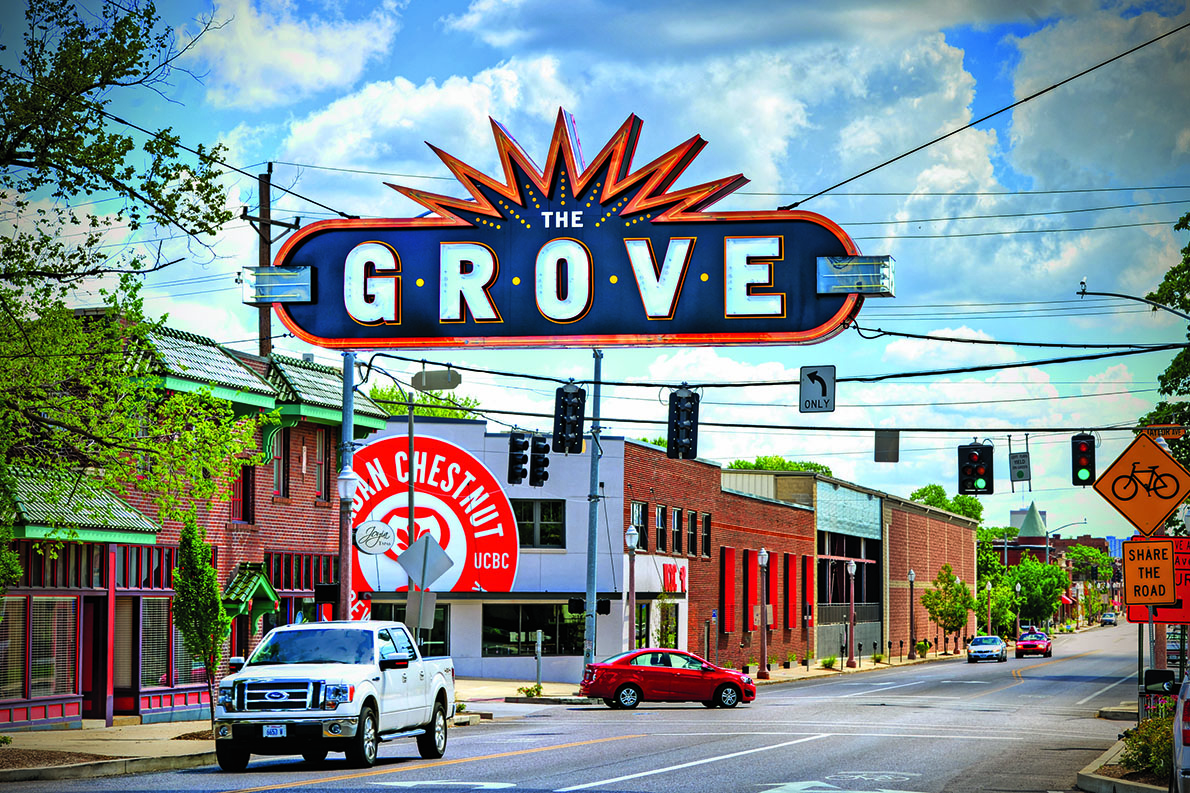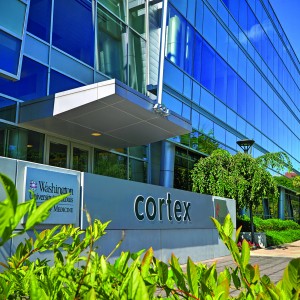There’s a saying in real estate: Retail follows rooftops. That’s certainly the case in the Grove, one of St. Louis’ liveliest entertainment districts. Years before the arrival of music venues, hip eateries, trendy bars and signature murals, a coalition of committed residents, city officials and project managers from the Washington University Medical Center Redevelopment Corporation (WUMCRC) worked to weed out problem landlords and step up neighborhood safety.
“I never imagined we’d see this sort of development,” says Phil Minden, MBA ’11, board member of Forest Park Southeast Development Corp., a community group that improves commercial and residential properties and unites neighbors. “When we moved here more than 20 years ago, there was significant criminal activity. Today, the Grove is a draw for the entire region.”
Also known as Forest Park Southeast, the Grove is located just south of the Washington University Medical Center. Its newest occupants include the 70,000-square-foot Urban Chestnut Brewing Co. brewery and bierhall; the Ready Room, an indie music concert venue; and Aventura at Forest Park, a $12 million apartment development. They join some 3,000 residents who live in a mix of low-income homes, historic flats and luxury townhouses.
“The growth has been organic. The residents are invested, and the entrepreneurs have brought their own vision and capital.”
Brian Phillips
“The growth has been organic,” says Brian Phillips, EMBA ’09, WUMCRC executive director. “The residents are invested, and the entrepreneurs have brought their own vision and capital. There is a lot of energy here.”
Washington University, which had helped turn around the Central West End in the 1980s, won a highly competitive $2.5 million federal grant and raised another $8.3 million to improve the neighborhood. The WUMCRC used the money to coordinate social services, upgrade public infrastructure, create opportunities for low-income residents to buy homes, repair dilapidated apartments and bolster security.
“Absentee landlords were offered a carrot and a stick,” Phillips says. “The carrot was free professional property management and forgivable loans to fix their facades. The stick was stepped-up code enforcement.”
The WUMCRC also helped Forest Park Southeast Development Corp. and community development organization Rise acquire more than 100 problem units from the neighborhood’s most negligent landlord.
“That provided a huge psychological boost for other developers to take chances,” Phillips says. “When people ask what we do, I tell them: ‘We do the things others can’t do until they can do them, and then we move onto something else.’ The key is to be a partner. You can’t take a paternalistic or dictatorial attitude. It takes time — a lot of getting-to-know-you, a lot of discussion and debate.”
Minden says the approach has paid off. Both the Grove and Central West End are gaining population. Meanwhile, the School of Medicine and partner BJC HealthCare have embarked on the 10-year Campus Renewal Project, which will expand St. Louis Children’s Hospital, Barnes-Jewish Hospital and the Alvin J. Siteman Cancer Center. The expansion also will provide more space for Washington University Physicians clinics and diagnostics, as well as new facilities for women and infants, oncology and surgical services.
“The university worked with the community groups and stayed involved with the grind,” says Minden, “doing the hard work it takes to move a community forward.”

